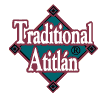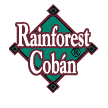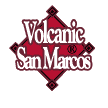Characteristics of high-quality coffee beans in eight producing areas of Guatemala
Guatemala is a famous producer of high-quality Arabica coffee in Central America. Coffee from five volcanic and three non-volcanic producing areas is very unique and enjoys a high reputation in the international market.
Mr. EduardoAmbrocio of the Guatemalan Coffee Company introduced Guatemalan coffee to the audience at the SCAA Houston show in April 2010. 1. AcatenangoValley ®: the AcatenangoValley valley, which is 2000 meters (6500 feet) above sea level, is shaded and ecologically unique, and the nearby Fuego volcano continues to erupt, making its coarse, sandy soil rich in minerals. Temperate sea breezes from the Pacific and a seasonal climate allow coffee in this region to be dried by sunlight and processed according to traditional family methods that have been accumulated over the years.


AcatenangoValley ®cupprofile: obvious acidity, pleasant dry and wet aroma, good mellow thickness, clear and long finish.
[note] Frag/Aroma: aroma / aroma Flavor: flavor Acidity: acidity Balance: equilibrium
Body: alcohol thickness Aftertaste: aftertaste (aftertaste) Overall: overall (impression) 2. AntiguaCoffee ®: rich volcanic soil, low humidity, plenty of sunshine and cool nights are the climatic characteristics of Antigua coffee producing areas. The valley is surrounded by three volcanoes: Agua, Fuego and Acatenango. Tierra del Fuego volcano is one of the three most active volcanoes in Guatemala, and the ash from frequent eruptions makes the soil of Antigua rich in minerals. The volcanic pumice in the soil can maintain humidity and help overcome the lack of rainfall in Antigua. In addition, the tree shade in this area is particularly dense, which can withstand occasional frosts and protect coffee plants from frosts.


Antigua coffee cup (AntiguaCoffee ®cupprofile) is rich in wet aroma, good balance, high sweetness and elegant taste. 3. Traditional Attilan (TraditionalAtitl á n ®) is one of the five major volcanic coffee producing areas in Guatemala, and its soil organic matter is the most abundant among the five volcanic coffee producing areas. 90% of the traditional Atilan coffee is grown on the violent volcanic slopes of Lake Attila, where the daily breeze stirs the lake, which is an important factor affecting the microclimate of the region. The area has accumulated excellent planting and processing techniques for a long time.


The characteristics of traditional Attilan coffee cup (TraditionalAtitl á n ®cupprofile): refreshing aroma, bright acidity and full alcohol thickness. 4. Rainforest Coban (RainforestCb á n ®) is cloudy, rainy and cool all the year round. The vast majority of Koban coffee in the rainforest is grown in the obviously undulating and foggy mountains of the region and is deeply influenced by limestone and clay in the Atlantic basin. Koban has two seasons: the rainy season and the rainy season.


Rainforest Coban Cup (RainforestCb á n ®cupprofile) has obvious fresh fruit flavor, balanced alcohol thickness and pleasant aroma. 5. FraijanesPlateau ®(Waiqiang Plateau): this area is volcanic soil, with high altitude, abundant rainfall and great humidity variation. Ash from Pacaya, Guatemala's most active volcano, provides important minerals for the soil in the region. There is plenty of sunshine in the dry season, and although the clouds and dew are heavy in the morning, they dissipate quickly. As a result, 100% of the coffee in the area is processed in the full sun.


FraijanesPlateau ®cupprofile has bright and uniform acidity, sufficient aroma and delicate thickness. 6. HighlandHuehue ®: of the three major non-volcanic coffee producing areas in Guatemala, the Gimonango Heights has the driest climate and the highest elevation. The dry and hot wind from Mexico's Tehuantepec plateau protects the area's coffee from frost, and coffee can be grown to 2000 meters (6500 feet). Because of its remote location, all coffee farmers have to process their own coffee, but fortunately there are so many streams in the area that small processing plants can be set up almost anywhere.


HighlandHuehue ®cupprofile: high acidity, pleasant, mellow thickness and wine aftertaste. 7. NewOriente ®: coffee in this area has been grown entirely by small farmers since the 1950s, and now every farmer in the mountains is a coffee production unit. This area, once the most remote and poorest part of Guatemala, is now alive and well. Rainy, cloudy, New Oriental ancient times is a volcanic area, soil volcanic metamorphic rock evolved, rich in minerals, balanced nutrition, different from other volcanic coffee producing areas.


New Oriental coffee cup (NewOriente ®cupprofile): taste well-balanced, mellow thickness, with chocolate flavor. 8. Volcano San Marco VolcanicSanMarcos ®: San Marco has the hottest climate of the eight largest coffee producing regions in Guatemala, with a maximum rainfall of 200inches (5000 mm). The rainy season is earlier than in other areas, and coffee trees bloom earlier. Like other remote areas of Guatemala, volcanic San Marco coffee is grown and processed by small farmers. Due to frequent rainfall in the rainy season, most coffees are pre-dried in the sun and then dried in a Guardiola dryer.


The VolcanicSanMarcos ®cupprofile of the volcano San Marco coffee cup has subtle floral aroma and taste, obvious acidity and good mellow thickness.
Important Notice :
前街咖啡 FrontStreet Coffee has moved to new addredd:
FrontStreet Coffee Address: 315,Donghua East Road,GuangZhou
Tel:020 38364473
- Prev

Carefully washed Royal Robusta Coffee beans
Arabica and Robusta are different varieties of coffee, but their fates are very different. Robasta is like a cheap Cinderella, while her sister Arabica is very expensive. In the dispute between the two beans, Americans and Italians have been against each other for decades. In fact, Americans are the initiators of Robasta beans becoming cheap beans. With the improvement of the quality of Robasta, after the millennium, excellent
- Next

Rwanda Coffee, the World Coffee producer
Rwandan coffee is absolutely high quality in the form of washed Arabica beans. As far as Africa is concerned, its coffee industry stands out because the country rises and falls by producing the best possible beans. The taste of Rwandan coffee is described as a grassy aroma with tropical climate characteristics. The country's fertile soil and climate help plants grow, and coffee trees seem to be driven
Related
- Beginners will see the "Coffee pull flower" guide!
- What is the difference between ice blog purified milk and ordinary milk coffee?
- Why is the Philippines the largest producer of crops in Liberia?
- For coffee extraction, should the fine powder be retained?
- How does extracted espresso fill pressed powder? How much strength does it take to press the powder?
- How to make jasmine cold extract coffee? Is the jasmine + latte good?
- Will this little toy really make the coffee taste better? How does Lily Drip affect coffee extraction?
- Will the action of slapping the filter cup also affect coffee extraction?
- What's the difference between powder-to-water ratio and powder-to-liquid ratio?
- What is the Ethiopian local species? What does it have to do with Heirloom native species?

